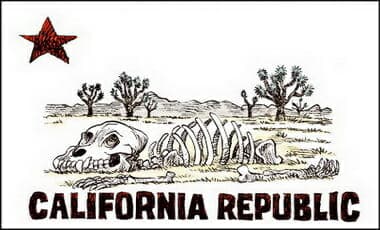Dr. Scott Atlas is the Robert Wesson Senior Fellow at the Hoover Institution, an accomplished physician, and a scholar of public health. For several weeks, Dr. Atlas has been making the case in print and in other media that we as a society have overreacted in imposing draconian restrictions on movement, gatherings, schools, sports, and other activities. He is not a COVID-19 denier—he believes the virus is a real threat and should be managed as such. But, as Dr. Atlas argues, there are some age groups and activities that are subject to very low risk. The one-size-fits-all approach we are currently using is overly authoritarian, inefficient, and not based in science. Dr. Atlas’s prescription includes more protection for people in nursing homes, two weeks of strict self-isolation for those with mild symptoms, and most importantly, the opening of all K–12 schools. The latter recommendation is vital for restarting and maintaining the economy so that parents are not housebound trying to work and educate their children. Dr. Atlas is also adamant that an economic shutdown, and all of the attendant issues that go along with it, is a terrible solution—the cure is worse than the disease. Finally, Dr. Atlas reveals some steps he’s taken in his own life to try to get things back to normal.
Hoover Institution


Some “Rona” Antibody Updates
CHICAGO CITY WIRE has this story (with thanks to FREE REPUBLIC):
A phlebotomist working at Roseland Community Hospital said Thursday that 30% to 50% of patients tested for the coronavirus have antibodies while only around 10% to 20% of those tested have the active virus.
Sumaya Owaynat, a phlebotomy technician, said she tests between 400 and 600 patients on an average day in the parking lot at Roseland Community Hospital. Drive-thru testing is from 9 a.m. to noon and 1 to 4 p.m. each day. However, the hospital has a limited number of tests they can give per day.
Owaynat said the number of patients coming through the testing center who appear to have already had coronavirus and gotten over it is far greater than those who currently have the disease.
“A lot of people have high antibodies, which means they had the coronavirus but they don’t have it anymore and their bodies built the antibodies,” Owaynat told Chicago City Wire.
Antibodies in the bloodstream reveal that a person has already had the coronavirus and may be immune to contracting the virus again.
If accurate, this means the spread of the virus may have been underway in the Roseland community – and the state and country as a whole – prior to the issuance of stay at home orders and widespread business closures in mid-March which have crippled the national economy….
A hat-tip to an unnamed friend from Facebook who didn’t want to post a DAILY WIRE article on her Facebook for fear of retaliation…
…At a hospital in Chicago, a non-randomized sample found that 30-50% of patients tested for COVID-19 have antibodies in their system, suggesting they already had the virus and have potential immunity.
“A phlebotomist working at Roseland Community Hospital said Thursday that 30% to 50% of patients tested for the coronavirus have antibodies while only around 10% to 20% of those tested have the active virus,” Chicago City Wire reported Thursday.
“Sumaya Owaynat, a phlebotomy technician, said she tests between 400 and 600 patients on an average day in the parking lot at Roseland Community Hospital. Drive-thru testing is from 9 a.m. to noon and 1 to 4 p.m. each day. However, the hospital has a limited number of tests they can give per day,” the report detailed. “Owaynat said the number of patients coming through the testing center who appear to have already had coronavirus and gotten over it is far greater than those who currently have the disease.”
“A lot of people have high antibodies, which means they had the coronavirus but they don’t have it anymore, and their bodies built the antibodies,” Owaynat told Chicago City Wire.
[….]
An antibody test study is reportedly underway in California by researchers at Stanford University.
“Researchers at Stanford Medicine are working to find out what proportion of Californians have already had COVID-19. The new study could help policymakers make more informed decisions during the coronavirus pandemic,” KSBW 8 News reported. “The team tested 3,200 people at three Bay Area locations on Saturday using an antibody test for COVID-19 and expect to release results in the coming weeks.”
This study mentioned at Stanford was brought up in conversation last week by my oldest son, and we are all (as a family) curious if the most vulnerable already had it as my father-in-law was pretty sick a few months back. Here is Victor Davis Hanson speaking to this issue with reference to the Stanford study as well (VDH is part of the Hoover Institution).
This article from PATCH is a bit critical of Hanson, but all-in-all, the common sense factor is there for me. Let me just say I am not convinced by the rejection of something stated without a refutation of the evidences mentioned. Chicago is already disproving Patch’s “expert input,” plus, I do not have to be an evolutionary biologist to critique neo-Darwinian theory, nor a woman to discuss the factual ending of a human life in the womb.
I am a fan, however, of this CLASSIC statement by William F. Buckley:
- “I would rather be governed by the first 2000 people in the Boston telephone directory than by the 2000 people on the faculty of Harvard University.”
(See also this MERCURY NEWS article on what Stanford has and is doing):
….“When you add it all up it would be naïve to think that California did not have some exposure,” Hanson told KSBW 8.
Stanford Medicine is conducting a study that may back up his assertion.
Stanford researchers took blood samples from approximately 3,200 volunteers in Santa Clara County on Friday and Saturday according to The Stanford Daily.
The test will show whether someone has been infected with the virus, including those who experienced mild or no symptoms, Stanford Associate Professor of Medicine Eran Bendavid told The Stanford Daily.
“It’s hard to stand up in this epidemic and say, ‘Look, we really don’t know if this epidemic is impending Armageddon,'” Bendavid said. “In order to know and reduce that uncertainty, you need numbers.”
Hanson believes the numbers could show that more Californians have been exposed to the virus than was previously known.
“One less-mentioned hypothesis is that California, as a front-line state, may have rather rapidly developed a greater level of herd immunity than other states, given that hints, anecdotes, and some official indications from both China and Italy that, again, the virus may well have been spreading abroad far earlier than the first recorded case in the U.S. —and likely from the coasts inward,” he wrote in a March 31 National Review column.
“So given the state’s unprecedented direct air access to China, and given its large expatriate and tourist Chinese communities, especially in its huge denser metropolitan corridors in Los Angeles and the Bay Area, it could be that what thousands of Californians experienced as an unusually “early” and “bad” flu season might have also reflected an early coronavirus epidemic, suggesting that many more Californians per capita than in other states may have acquired immunity to the virus.”…
AMERICAN THINKER joins the fray as well:
…In my home state of Colorado, “Health officials now believe the new coronavirus was circulating in Colorado as early as mid-January, about six weeks before the state even had the ability to test people for the disease.” These individuals, if extremely sick, might test negative for influenza and other known viruses, yet might still have a rough course just as the current COVID-19 patients are experiencing.
Again, if cases were circulating in the U.S. in mid-January, first cases were a month or two earlier, some symptomatic, some asymptomatic, but all below the radar.
Where were these first patients coming from? U.S. Customs and Border Protection reports, “Some 14,000 people flew into the U.S. from China each day — almost 5 million for that year.” Let me repeat, 14,000 people each day.
This was likely higher during the Christmas holidays with American students studying in China, and vice versa, returning home in December, then back to school in January. How many of these young people were asymptomatic carriers, bringing the Wuhan virus to parents, grandparents, and their professors?…

California’s Real Debt Is $1.3-Trillion (PragerU Update)
John and Ken speak to Marc Joffe of the CALIFORNIA POLICY CENTER in regard to these recent articles on the subject of California’s fiscal emergency:
➤ California’s Total State and Local Debt Totals $1.3 Trillion
➤ Can California’s Economy Withstand $1.3 Trillion of Government Debt?
One aspect Marc Joffe mentioned would be a way to overcome this “debt” is to increase California’s population… however, we see through some recent stories…
★ California Won’t Fall Into The Sea — It’s Moving To Texas Instead
★ The Exodus of People Moving Away From California Is Becoming an Avalanche
…this is not a viable option… nor will it be as long as Democrats are in charge:
✦ California Regression – Eco Craziness
✦ John & Ken Discuss CalPERS Ponzi Scheme
In other words, Californians are doomed if remaining on this course.
Who cares about public pension liability? Well, you should – after all, it’s the reason entire cities and even states are facing bankruptcy. Joshua Rauh, professor of finance at Stanford and Senior Fellow at the Hoover Institution, paints a startling picture of just how broken the public pension system really is, and what will happen if we continue to ignore it.

One Simple Test Whether Marxism is True |Thomas Sowell|
Thomas Sowell is an American economist, turned social theorist, political philosopher, and author. He is currently Senior Fellow at the Hoover Institution, Stanford University. In this talk from May 2018, he explains one simple test to decide whether Marxism is true.
Check out the full interview via the Hoover Institute:

How The Left Discriminates Against Those It Professes To Champion
I thought of the following Thomas Sowell excerpt via a Facebook discussion regarding illegal immigrants/immigration. Stephanie C. said the following:
- Does anyone here know how many undocumented people live in SCV? [JUMP TO MORE DIRECT ANSWER] Seems like many people are assuming that if your Hispanic they must be undocumented. I hope people know that’s not the case.
California has the highest illegal immigrant population comparing states. And so the assumption of calling into question one’s “status” may be a logical leap in assumption. Which is why I thought of this Sowell portion of a book I just finished. Here is my Facebook response, followed by an excerpt from the aforementioned book (with a quick set-up for it):
I guess that would be another side-effect [harm] done by the open-borders people. Small companies wanting to hire legal aliens but not having the training or knowledge to know the difference, and so they stay away from them entirely. I just finished a Thomas Sowell book entitled, “Discrimination and Disparities,” and this short/concise book really opened up the consequences of actions.
For instance, businesses is black communities are apprehensive in hiring young black men. Businesses that do background checks hire more young black men than the national average. Businesses that do not do background checks stay away from this demographic.
The Democrats in many of these impoverished areas start campaigns or the largely Democrat city council say that doing background checks is bigoted and targets black workers. Racist in other words, the card overused as of late.
So they force these companies to cease-and-desist. And so these companies offering work experience, communication skills, a sense of pride in ones work, etc., are all thrown to the wayside….. these companies that would and did hire large quantities of young black men stay away from the demographic.
I will forego the posting of what Discrimination 1 and Discrimination 2 are, but the main point easily extracted herein is that Leftist Democrats (“Progressives”) stop background checks in employment due to a [wrongly] perceived targeting of black youth. And so this is yet another example of a problem CREATED through Leftist legislation and then used (black unemployment) to keep said demographic in a state of anger and voting for who will give hand-out and not who will allow the market to create opportunity. I believe the leadership of the Democrat Party has this in mind when doing stuff like this, the general Left leaning population just wants to feel good about their position (SEE QUOTE A).
Another example of a problem CREATED by Democrats and then used in a political manner to rile up it’s base against Trump and the GOP is the immigration battle in sanctuary states is this:
Here is the Sowell excerpt as promised…. FINALLY:
To take an extreme example of Discrimination 1b, for the sake of illustration, if 40 percent of the people in Group X are alcoholics and 1 percent of the people in Group Y are alcoholics, an employer may well prefer to hire only people from Group Y for work where an alcoholic would be not only ineffective but dangerous. This would mean that a majority of the people in Group X— 60 percent in this case— would be denied employment, even though they are not alcoholics.
What matters, crucially, to the employer is the cost of determining which individual is or is not an alcoholic, when job applicants all show up sober on the day when they are seeking employment.
This also matters to the customers who buy the employer’s products and to society as a whole. If alcoholics produce a higher proportion of products that turn out to be defective, that is a cost to customers, and that cost may take different forms. For example, the customer could buy the product and then discover that it is defective. Alternatively, defects in the product might be discovered at the factory and discarded. In this case, the customers will be charged higher prices for the products that are sold, since the costs of defective products that are discovered and discarded at the factory must be covered by the prices charged for the reliable products that pass the screening test and are sold.
To the extent that alcoholics are not only less competent but dangerous, the costs of those dangers are paid by either fellow employees who face those dangers on the job or by customers who buy dangerously defective products, or both. In short, there are serious costs inherent in the situation, so that either 60 percent of the people in Group X or employers or customers— or all three groups— end up paying the costs of the alcoholism of 40 percent of the people in Group X
This is certainly not judging each job applicant as an individual, so it is not Discrimination I in the purest sense of Discrimination Ia. On the other hand, it is also not Discrimination II, in the sense of decisions based on a personal bias or antipathy toward that group. The employer might well have personal friends from Group X, based on far more knowledge of those particular individuals than it is possible to get about job applicants, without prohibitive costs.
The point here is neither to justify nor condemn the employer but to classify different decision-making processes, so that their implications and consequences can be analyzed separately. If judging each person as an individual is Discrimination 1a, we can classify as Discrimination 1b basing decisions about groups on information that is correct for that group, though not necessarily correct for every individual in that group, nor necessarily even correct for a majority of the individuals in that group.
A real-life example of the effect of the cost of knowledge in this context is a study which showed that, despite the reluctance of many employers to hire young black males, because a significant proportion of them have criminal records (Discrimination 1b), those particular employers who automatically did criminal background checks on all their employees (Discrimination 1a) tended to hire more young black males than did other employers.1
In other words, where the nature of the work made criminal background checks worth the cost for all employees, it was no longer necessary to use group information to assess whether individual young black job applicants had a criminal background. This made young black job applicants without a criminal background more employable than before.
More is involved here than simply a question of nomenclature. It has implications for practical policies in the real world. Many observers, hoping to help young black males have more employment opportunities, have advocated prohibiting employers from asking job applicants questions about a criminal record. Moreover, the U.S. Equal Employment Opportunity Commission has sued employers who do criminal background checks on job applicants, on grounds that this was racial discrimination, even when it was applied to all job applicants, regardless of race.2 Empirically, however, criminal background checks provided more employment opportunities for young black males.
[1] Harry J. Holzer, Steven Raphael, and Michael A. Stoll, “Perceived Criminality, Criminal Background Checks, and the Racial Hiring Practices of Employers,” Journal of Law and Economics, Vol. 49, No. 2 (October 2006), pp. 452, 473.
[2] Jason L. Riley, “Jobless Blacks Should Cheer Background Checks,” Wall Street Journal, August 23, 2013, p. All; Paul Sperry, “Background Checks Are Racist?” Investor’s Business Daily, March 28, 2014, p. Al.
Thomas Sowell, Discrimination and Disparities (New York, NY: Basic Books, 2018), 23-25 (added references).
Here is an excerpt from Jason Riley’s piece mentioned in footnote #2 above, via HOT AIR:
On the contrary, an October 2006 study in the Journal of Law and Economics, “Perceived Criminality, Criminal Background Checks, and the Racial Hiring Practices of Employers,” found that “employers that check criminal backgrounds are in general more likely to hire African Americans,” according to Harry Holzer of Georgetown University and his two co-authors. “[T]he adverse consequence of employer-initiated background checks on the likelihood of hiring African Americans is more than offset by the positive effect of eliminating statistical discrimination.” These researchers surmise that employers who can screen for prison records are less likely to rely on prejudice when hiring.
Blacks aren’t the only beneficiaries. Analyzing “employer willingness to hire other stigmatized groups of workers (such as workers with gaps in their employment history),” they found the same pattern. The results, they wrote, “suggest that in the absence of background checks, employers use race, gaps in employment history, and other perceived correlates of criminal activity to assess the likelihood of an applicant’s previous felony convictions and factor such assessments into the hiring decision.”
Watch Jason Riley discuss one of his books on C-SPAN’s Book TV interview.
CALIFORNIA UNDOCUMENTED POPULATION
This is with thanks to BLACK PIGEON SPEAKS! Using the numbers below and the idea (fact really) that the largest population of illegal immigrants live in California, I would say California illegal population is at least 13% of Cali’s population. It wouldn’t be unreasonable to say, then, that it could be as high as 20% (so 2-of-every-10 residents). Here are some other factoids:
- Most undocumented immigrants are from Latin America. Nationwide, 78% of undocumented immigrants are from Latin America—a slight majority (52%) come from Mexico alone. Most of the others (13%) are from Asia, although Africa and Europe also account for hundreds of thousands of undocumented immigrants in the US. The Pew Research Center (PRC) estimates that as of 2014, 71% of California’s undocumented population was Mexican-born.
A working paper by Dr. Mohammad Fazel Zarandi from the Yale School of Management, coauthored by two other Yale professors, estimates that there are 22.8 million illegal immigrants in the United States.
This is over double estimates compiled by the Department of Homeland Security, which claims 11.1 million illegal aliens live in the US.
The paper’s abstract outlines some of the reasons why their estimate is both higher, and better than the current government statistics:
We apply standard operational principles of inflows and outflows to estimate the number of undocumented immigrants in the United States, using the best available data, including some that has only recently become available. We generate a lower bound for the number of undocumented immigrants using conservative parameter values that underestimate inflows and overestimate outflows.
Our lower bound is close to 17 million, 50% higher than the most prominent current estimate of 11.3 million, which is based on survey data and thus different sources and methods. Standard parameter values generate an estimate of 22.8 million undocumented immigrants, twice as large as the current estimate.
Conservatives have argued for well over a decade that the number of illegal immigrants is widely underestimated by the government, and think tanks which base their calculations on government data—finally academics are beginning to take an independent look at the problem.
But the fact that the paper needed to be written at all highlights an insidious problem: we really don’t know how many illegal immigrants live in the US. With that in mind, I think it’s worth surveying the research on the topic—at the very least I’ll be able to give you some context for the broader debate….

Why Is Health Insurance so Complicated?
Why is health insurance so complicated, while car insurance and life insurance are so simple? Can health insurance be more like, well, insurance? Lanhee Chen, fellow at the Hoover Institution, explains.
Hoover Institution`s Peter Robinson Sits Down with Thomas Sowell
In this wide-ranging interview marking the publication of his new book, The Thomas Sowell Reader, Thomas Sowell, the Rose and Milton Friedman Senior Fellow on Public Policy at the Hoover Institution, discusses, with Hoover research fellow Peter Robinson, his life, Barack Obama, class warfare, Ty Cobb, Babe Ruth, and the influence of Milton Friedman.
The Anti-Obaman (Governor Haley Barbour Interview)